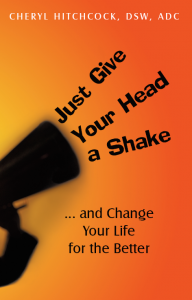“I thought of this while I was in the shower this morning.”
“This came to me while I was riding my bicycle to work.”
“I was running the vacuum cleaner when, suddenly, it hit me; I knew exactly what I had to do!”
You’ve been there, and done that. We all have. Right in the middle of some mundane, repetitive task, the light bulb goes off and a solution to a problem, or a new course of action, is realized. It feels almost mystical at the time, yet it’s not. In fact, it’s something much simpler than that; it’s mindfulness.
At its most fundamental level, and despite the hoopla and hype surrounding the concept today, mindfulness is merely the ability to focus on the present; to BE present in The Now, consciously and completely.
What is mindfulness?
So, why does it so often happen when performing commonplace, everyday chores or mindless activities? And, why is it so difficult to achieve mindfulness when you’re actually trying to? This is what I call “Accidental Mindfulness,” and it’s a key to fully conscious mindfulness.
 The first answer is, because your mind never really sleeps. It’s always working to figure out your world, and it’s impossible to shut it down. The result of this is that, when you’re engaged in repetitive, rhythmic activity, activity that does not require much focus or full consciousness, your mind is able to contemplate other things that are important to it – and you.
The first answer is, because your mind never really sleeps. It’s always working to figure out your world, and it’s impossible to shut it down. The result of this is that, when you’re engaged in repetitive, rhythmic activity, activity that does not require much focus or full consciousness, your mind is able to contemplate other things that are important to it – and you.- Next, the very repetitiveness of such activity actually sets up a rhythm within your brain that makes it easier for your mind to take over and function at a deeper, more productive level. The rhythmic pumping of your legs as you ride your bike; the regular push/pull action of the vacuum cleaner; the stroke of the washcloth over your body in the shower, all contribute to the rhythm of thinking, allowing your mind to become a creative problem solver.
- Finally, such “mindless” action allows your conscious and unconscious minds to come together for solution based thought, without the distraction of meaningful action. For example, driving your car over icy roads to reach the ice rink with a bunch of children along will require all of your concentration – or should. Your conscious mind is fully involved in the task at hand. It has no time for distraction, knowing it could be dangerous to allow that to happen. However, once you reach the ice rink, if you begin skating, you may very well realize an epiphany like one of those described above, thanks to the mindless rhythm of the activity you’re enjoying. (Of course, once you get back in the car with all of those kids, it’s time to refocus and become fully conscious of the moment.)
To achieve mindfulness deliberately, or while “fully conscious,” you can mirror the mindless action described above. Rhythmic chanting for example, has long been practiced as a path to meditation and mindfulness. Deep breathing is also rhythmic, as is focusing on our heartbeat. Each of these are conscious efforts to focus the mind on something repetitive and rhythmic as a way to internalize and blend conscious and unconscious thought. In other words, what often happens so easily and unconsciously in the shower, requires the effort and focus of meditation to achieve deliberately.
If you’d like to read more on using repetitive action to achieve conscious mindfulness, I suggest you try 5 Ways You Can Use Mindfulness to Improve Your Health, an article by Laurie Erdman at HuffingtonPost.com. Though the author does not explain things in quite this way, I believe the use of simple, mundane tasks that she describes is a great tool for making the transition from Accidental Mindfulness to Deliberate Mindfulness.
Would you like help with improving your mindfulness, and in reducing the stress in your life? If so, please get in touch with me today.


Speak Your Mind